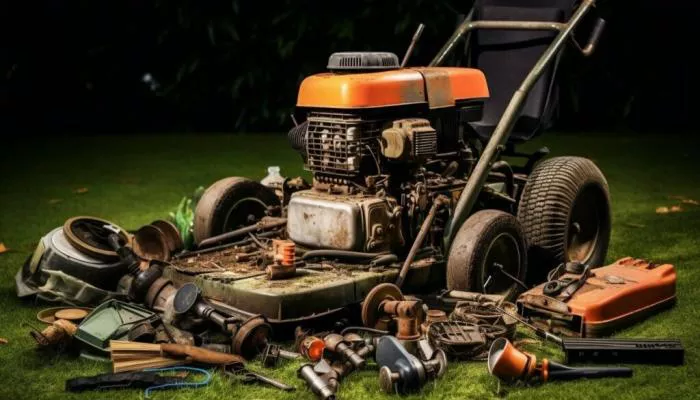As sustainability takes center stage in household practices, responsible disposal of lawn equipment has become an environmental priority. Lawn mowers—containing hazardous fluids, metals, and batteries—pose significant risks if improperly discarded. This report provides a clear, actionable guide to eco-friendly recycling while exploring replacement options, from commercial-grade to electric models. With growing government incentives and manufacturer take-back programs, homeowners now have more ways than ever to reduce waste and make environmentally conscious choices. Stay informed on the latest EPA guidelines and market trends to ensure your lawn care routine aligns with green living standards.
The Recycling Process: Step-by-Step
Environmental agencies emphasize specific steps for safe lawn mower disposal:
Fluid removal: All gasoline and oil must be drained to prevent soil and water contamination, with fluids disposed through approved hazardous waste channels
Component separation: Disassembling engines, blades, and frames improves recycling efficiency
Local facility coordination: Most municipalities offer specialized recycling services, though policies vary by region
Alternative options: Functional equipment can be donated to community organizations or sold through secondhand marketplaces
Industry experts note that manufacturers are increasingly offering take-back programs, with some retailers providing trade-in discounts on new purchases.
Environmental Impact and Regulations
The Environmental Protection Agency warns that improper disposal contributes significantly to landfill waste and groundwater pollution. Modern mowers contain an average of 15-20 pounds of recyclable metal alongside hazardous fluids and battery components.
“These machines represent both an environmental challenge and recovery opportunity,” says Mark Reynolds of the National Recycling Coalition. “Proper handling ensures metals reenter manufacturing streams while keeping toxins out of ecosystems.”
Choosing Replacement Equipment: Commercial vs. Residential Models
With growing consumer interest in sustainable landscaping, manufacturers report increased demand for both commercial-grade and eco-friendly residential mowers.
Market Trends
- Commercial models now feature enhanced emission controls and fuel efficiency
- Residential options show strong growth in battery-powered systems, with 35% market penetration in 2025
- Government incentives in several states offer rebates for electric mower purchases
Industry analysts suggest consulting local regulations and energy programs when selecting new equipment, as sustainability standards continue to evolve nationwide.
For comprehensive product comparisons and maintenance advice, consumers can access resources through the Department of Energy’s EnergyStar program and local extension services.

